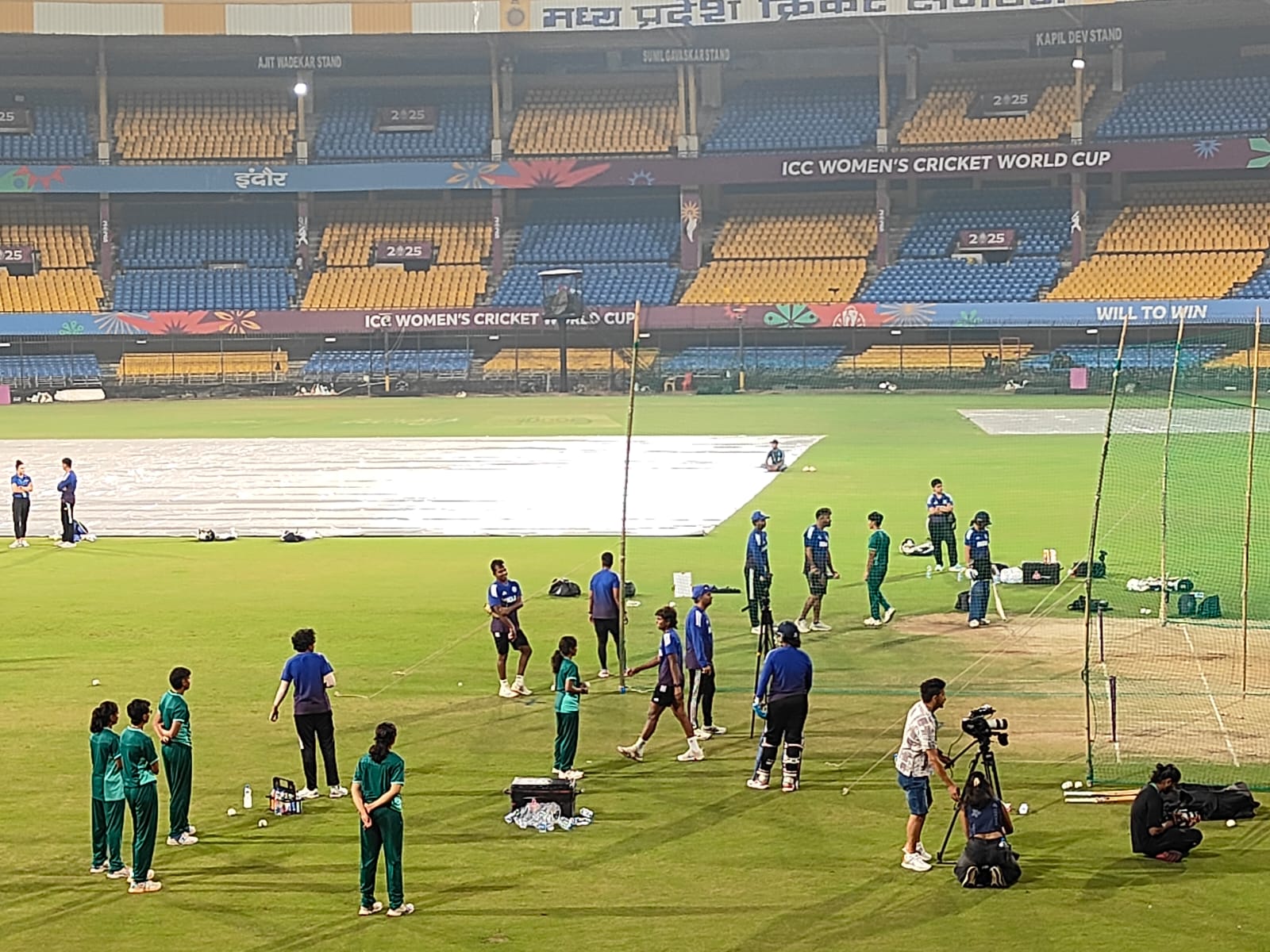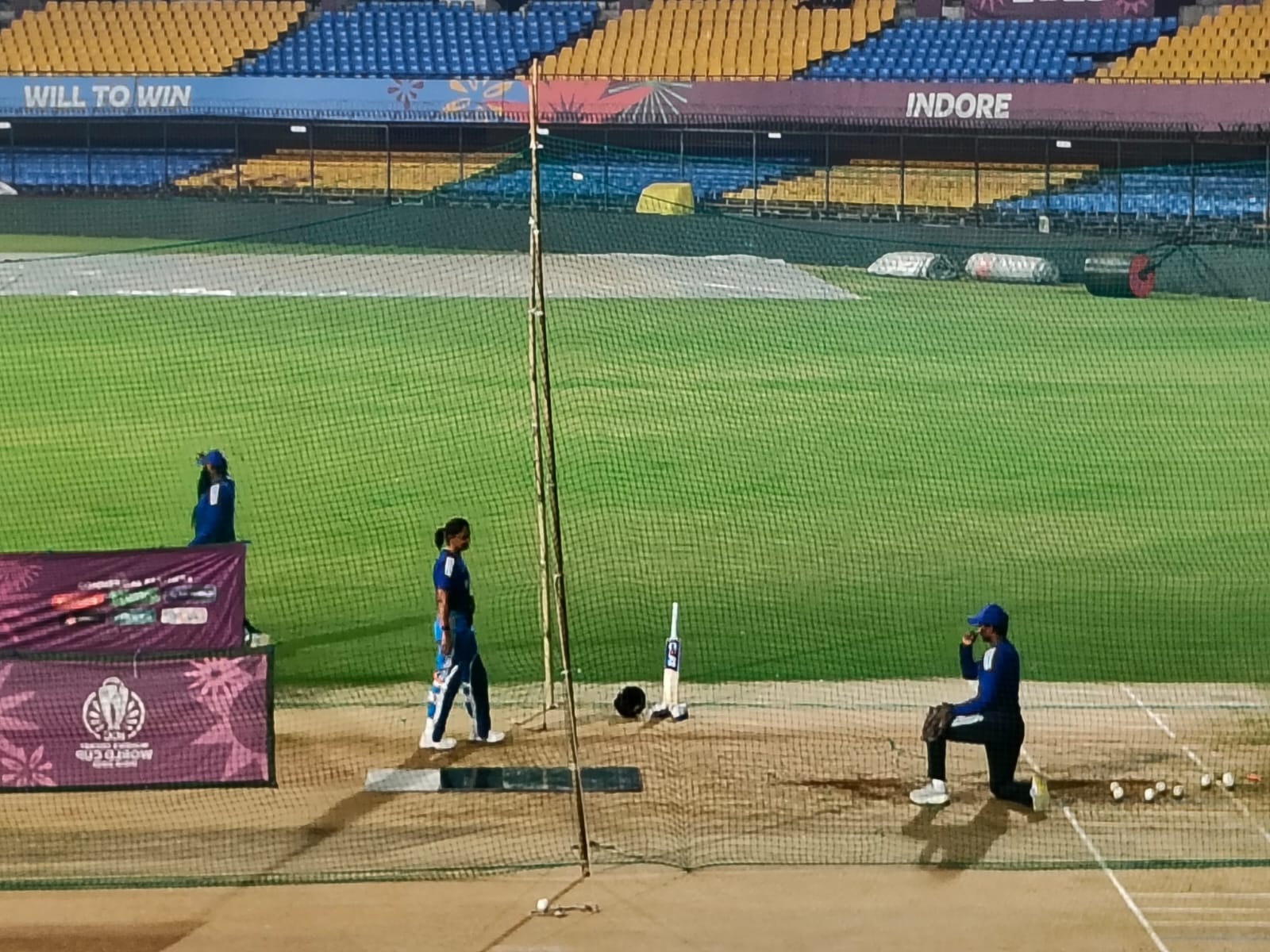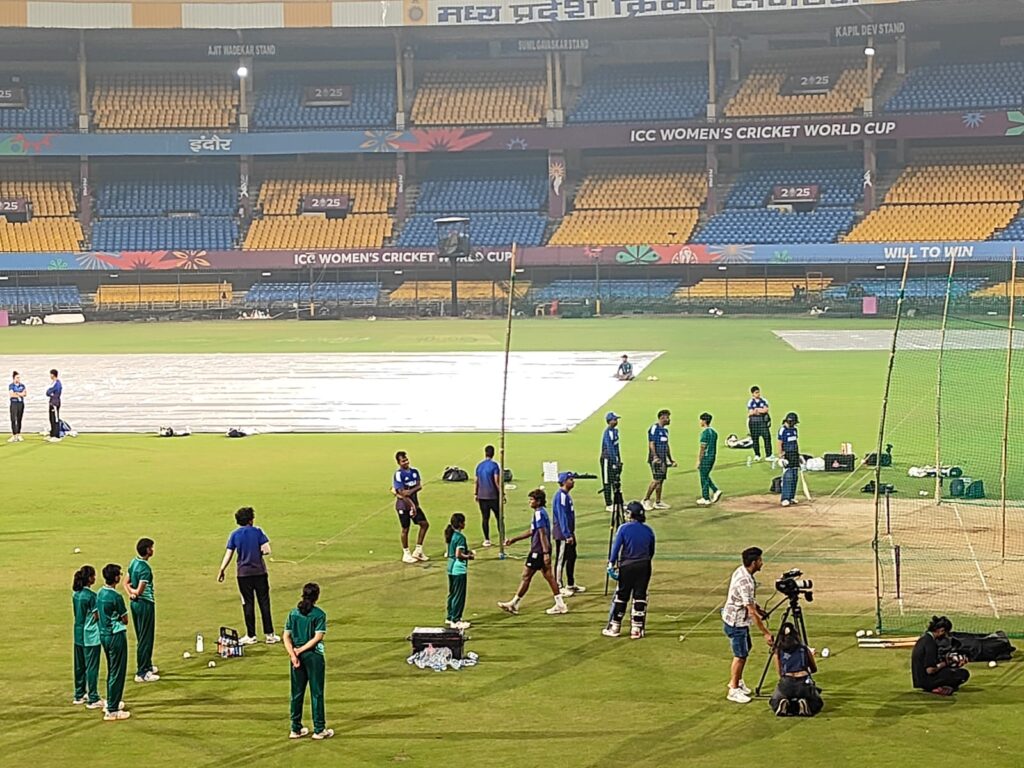
By Trisha Ghosal in Indore
As the saying goes, practice makes a person perfect. But mindless repetition rarely creates perfection. The Indian team seems to have realised that ever since arriving in Indore. Having followed them closely since their bilateral series against Australia, the writer can vouch that the last three days have been among the most purposeful and grounded sessions this group has had in a long time.
When a cricketer plays at the international level, it’s assumed they already know their craft. These 15 players are no different. Yet, after a demanding start to the World Cup, India’s six-day break between the Australia and England games has offered something rare, time. Time to pause, to think, to return to the drawing board and look inward. These three sessions weren’t about starting afresh but about understanding what needed to change, individually and collectively.
Richa’s wicketkeeping: Richa Ghosh spent two intense sessions behind the stumps, facing drills designed to stretch her instincts. One used half stumps fitted with rods, making the ball deviate unpredictably to recreate match chaos. Another placed a shadow batter in front of her to simulate a blinded view, the kind that tests anticipation in real games.
Harmanpreet Kaur’s late cut: The Indian captain, known for her explosiveness, has been a constant presence in the nets on all three days. Her focus this week has been clear, sharpening her hand-eye coordination, working on her power game, and above all, addressing the late cut that has recently cost her wickets. The repetition was not mechanical but mindful, an attempt to reclaim rhythm.
Strike rotation: If there’s one area India have struggled with in this World Cup, it’s turning the strike over. Their dot-ball percentages across the last four games underline it:
vs Sri Lanka – 45%
vs Pakistan – 57%
vs South Africa – 62%
vs Australia – 48%

It’s no secret this needed fixing. For weeks, the writer has argued that the batters must practise finding gaps using cones as fielders and this time, that idea came alive. The coaches recreated match conditions, asking bowlers to set fields for specific batters. In one net, bowling coach Avishkar Salvi took charge, while in another, head coach Amol Muzumdar played umpire, judging whether the shots truly bisected the field. Batters batted in pairs, called runs, and ran them as they would in a live match. At one point, Arundhati Reddy overstepped, Salvi called a no-ball, and the next delivery was treated as a free hit, exactly like it will be in a match.
Watching these sessions, one thing stands out: this team has stopped brushing its problems aside. Acceptance is the first step toward change. And this acceptance, quiet, honest, collective, is visible.
Do these three days guarantee victory against England? Of course not. Practice and performance are distant cousins, and transformation doesn’t arrive overnight. What it does bring, though, is clarity, the kind that steadies you before a storm.
If there were a point to be earned for effort alone, India would already be ahead, with captain Harmanpreet Kaur leading from the front, setting the tone with both intent and intensity. From here, every game is a must-win. But usually, when the process falls into place, the results, sooner or later, tend to follow.
For more updates on the Women’s Cricket World Cup, follow RevSportz





